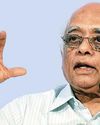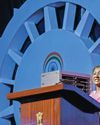
Hemopoietic stem cell transplantation (HSCT) was developed in the early 1970s and was recognised as a potential treatment for a number of benign and malignant haematological diseases. Since then, the field has grown into a full specialty. Keeping pace with technological advances, this area has also seen evolution as regards to indications, availability of donor in family (an HLA identical sibling) or outside HLA matched unrelated donor (with the help of bone marrow donor registries) or haploidentical donor from parent or sibling.
In India, this treatment was started in 1983. The progress was slow initially, but has picked up in the last two decades. Currently, more than 110 centres are doing transplant. As per the Indian Society of Blood and Marrow Transplantation Registry, 23,843 patients underwent HSCT till 2021. Of these, 13,962 underwent allogenic HSCT (using stem cells from a donor), and 9,881 autologous HSCT (using patient's own stem cells). Multiple myeloma and lymphomas (Hodgkin's and Non Hodgkin's) are major indications for autologous HSCT, while acute myeloblastic leukemia (AML),ẞ-Thalassemia, severe aplastic anaemia and acute lymphoblastic leukemia are major indications for allogeneic HSCT.
This story is from the December 01, 2024 edition of THE WEEK India.
Start your 7-day Magzter GOLD free trial to access thousands of curated premium stories, and 9,000+ magazines and newspapers.
Already a subscriber ? Sign In
This story is from the December 01, 2024 edition of THE WEEK India.
Start your 7-day Magzter GOLD free trial to access thousands of curated premium stories, and 9,000+ magazines and newspapers.
Already a subscriber? Sign In

Why Trump covets Greenland
There’s no denying it. Donald Trump is a prince among real estate developers, known for his pushy, winner-takes-all approach.

Bomb man who kept his mouth shut
The best thing about Rajagopala Chidambaram, who passed away recently, was that he “could keep his mouth shut”, as his mentor Raja Ramanna wrote in his memoir, Years of Pilgrimage. No wonder, he tested six atom bombs with no CIA, ISI or satellite spy eyes getting any wiser beforehand.

Extreme to mainstream
With the recent surrender of six Naxals, Chief Minister Siddaramaiah declares Karnataka almost “Naxal-free”. The BJP is questioning his “closeness” to the far left

SUMMITS, SURVIVAL AND SERVICE
Mountaineering expeditions play a crucial role in mountain warfare training

EYES ON THE ICE
THE INDIAN ARMY TRAINS ITS MOUNTAIN WARRIORS AT THE MACHOI GLACIER WHERE THEY LEARN ICE AND SNOW CRAFT IN SUB-ZERO TEMPERATURES. THE HIGH ALTITUDE WARFARE SCHOOL IN GULMARG PREPARES THEM FOR WARS THAT ARE DRIVEN BY TECHNOLOGY AND INTELLIGENCE. ON SNOW-COVERED BATTLEFIELDS LIKE THE HIMALAYAS, THE ARMY WANTS ITS JUNIOR LEADERSHIP TO BECOME DECISION-MAKERS AT THE TACTICAL LEVEL

Time to dream big
Every year, January 12 is celebrated as National Youth Day—as homage to the birth anniversary of Swami Vivekananda, honouring his enduring teachings and visionary ideas.

Climbing the power ladder
In his latest book, T.V. Paul explores India's search for its day in the sun as a global power

Howdy, rowdies
The world is already exhausted, and Donald Trump has not even begun his second term.

The going gets rough
It’s been a very macho fortnight

Eastward Ho!
Odisha, which hosted this year's Pravasi Bharatiya Divas, is emerging as a focal point for India's Act East Policy, given the turmoil in the northeast